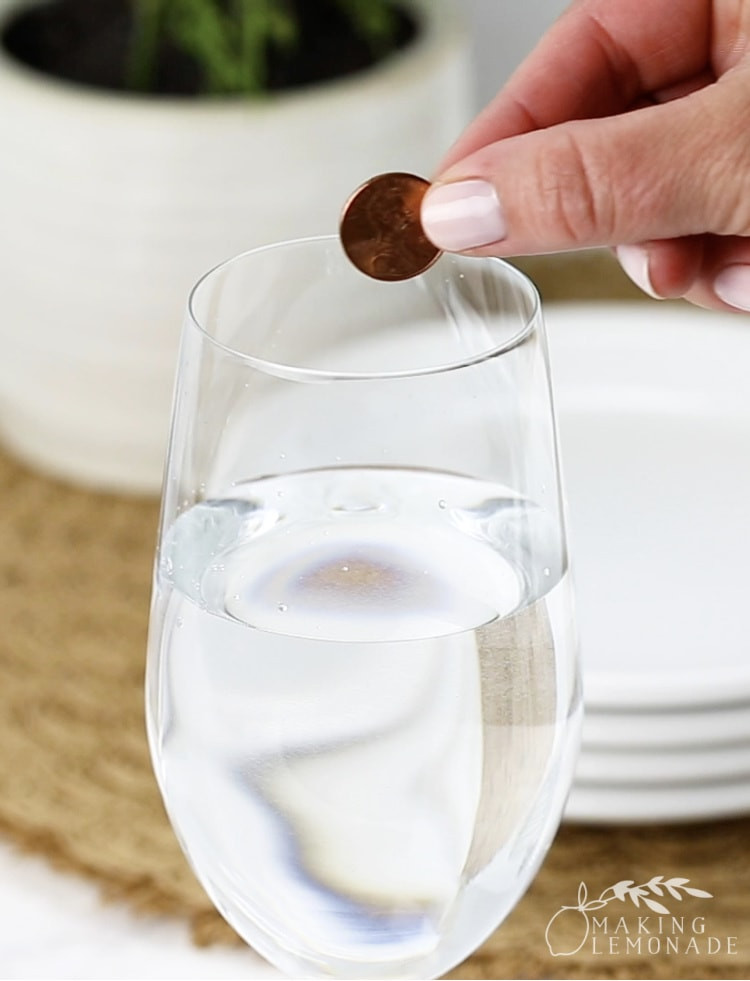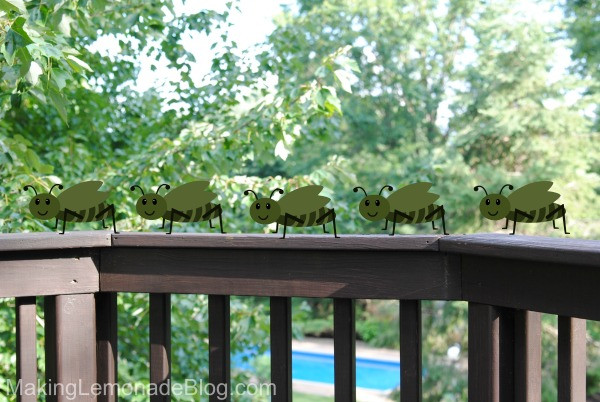Are you tired of pesky flies ruining your outdoor enjoyment? At flyermedia.net, we understand the frustration of dealing with these unwanted guests. Here’s how to deter flies from your patio using proven methods, expert tips, and readily available solutions, so you can reclaim your outdoor space and enjoy peaceful moments. This guide covers everything from natural remedies to practical gadgets for effective fly control, and remember to explore flyermedia.net for more insightful articles on outdoor living and pest management.
1. Understanding the Fly Problem on Your Patio
Before diving into solutions, it’s crucial to understand why flies are attracted to your patio in the first place. This knowledge will help you implement more effective deterrents.
1.1 What Attracts Flies to Your Patio?
Flies are drawn to several factors commonly found in outdoor spaces. Identifying these attractants is the first step in deterring them.
- Food and Drink: Flies are scavengers, and any food or drink left uncovered will attract them. This includes leftover meals, spilled drinks, and even crumbs.
- Garbage and Compost: Open garbage cans and compost bins emit odors that flies find irresistible.
- Pet Waste: Animal feces are a significant attractant for flies.
- Standing Water: Flies need water to survive and breed, so any standing water, such as in planters or bird baths, can draw them in.
- Decomposing Organic Matter: Decaying leaves, grass clippings, and other organic materials provide a breeding ground for flies.
1.2 Different Types of Flies You Might Encounter
Understanding the type of fly you’re dealing with can help tailor your deterrent methods.
| Fly Type | Characteristics | Attractants |
|---|---|---|
| House Flies | Grayish, medium-sized, and commonly found near human dwellings. | Food scraps, garbage, and animal waste. |
| Fruit Flies | Small, yellowish-brown, and often seen hovering around fruit bowls. | Overripe fruit, fermented beverages, and sugary spills. |
| Blow Flies | Metallic blue or green, larger than house flies, and attracted to decaying matter. | Dead animals, rotting meat, and garbage. |
| Drain Flies | Small, dark, and fuzzy, often found near drains and sewers. | Organic matter buildup in drains and pipes. |
| Flesh Flies | Large, grayish, and often seen near carrion or decaying flesh. | Decaying meat, animal carcasses, and manure. |
2. Natural Fly Deterrents for Your Patio
For those seeking eco-friendly options, several natural deterrents can help keep flies away without harmful chemicals.
2.1 Plants That Repel Flies
Certain plants contain natural compounds that flies find offensive. Incorporating these into your patio garden can create a natural fly barrier.
- Basil: Basil emits a strong scent that repels flies and mosquitoes. Place basil plants near your seating area or in pots around the patio.
- Lavender: The fragrant scent of lavender is pleasant to humans but deters flies and moths. Plant lavender in pots or garden beds.
- Mint: Mint plants, particularly peppermint and spearmint, repel flies, ants, and other insects. Grow mint in containers to prevent it from spreading aggressively.
- Rosemary: Rosemary’s woody scent is effective at repelling flies, mosquitoes, and cabbage moths. Plant rosemary in a sunny spot on your patio.
- Marigolds: Marigolds contain pyrethrum, an insecticide compound that repels flies, mosquitoes, and nematodes. Plant marigolds in flower beds or pots.
- Citronella Grass: While commonly known for mosquito control, citronella grass also deters flies. Plant it in large pots and place them around your patio.
2.2 Essential Oils for Fly Control
Essential oils derived from plants can be used to create effective fly repellents.
- Peppermint Oil: Peppermint oil has a strong scent that repels flies and other insects. Mix a few drops with water in a spray bottle and spritz around your patio.
- Lavender Oil: Lavender oil not only smells pleasant but also deters flies. Add a few drops to a diffuser or mix with water for a spray.
- Eucalyptus Oil: Eucalyptus oil is known for its insect-repelling properties. Use it in a diffuser or mix with water for a spray.
- Citronella Oil: Citronella oil is a popular choice for repelling mosquitoes and flies. Use it in candles, torches, or diffusers.
- Clove Oil: Clove oil has a strong, spicy scent that repels flies and other insects. Dilute it with water and spray around your patio.
2.3 DIY Fly Sprays
Creating your own fly spray is a cost-effective and natural way to deter flies.
- Vinegar Spray: Mix equal parts white vinegar and water in a spray bottle. Spray around your patio, focusing on areas where flies congregate.
- Dish Soap and Water: Mix a few drops of dish soap with water in a spray bottle. The soap breaks the surface tension of the water, causing flies to drown when sprayed.
- Apple Cider Vinegar Trap: Fill a jar with apple cider vinegar and add a few drops of dish soap. Cover the jar with plastic wrap and poke small holes in it. Flies will be attracted to the vinegar, enter the trap, and drown.
 Dropping a penny in a full glass of water to keep flies away
Dropping a penny in a full glass of water to keep flies away
3. Practical Methods to Keep Flies Away
Beyond natural deterrents, several practical methods can help reduce fly populations on your patio.
3.1 Maintaining Cleanliness
Keeping your patio clean is crucial for preventing fly infestations.
- Regular Cleaning: Sweep or wash your patio regularly to remove food crumbs, spills, and other debris that attract flies.
- Proper Waste Disposal: Use garbage cans with tight-fitting lids and empty them frequently. Clean garbage cans regularly to remove any residue.
- Pet Waste Management: Clean up pet waste immediately to prevent flies from breeding.
- Compost Management: Keep compost bins away from your patio and ensure they are properly maintained. Turn the compost regularly and cover it with a layer of soil or leaves.
3.2 Fly Traps and Zappers
Fly traps and zappers can be effective tools for reducing fly populations.
- Sticky Fly Traps: These traps use a sticky surface to capture flies. Hang them in areas where flies are common, but keep them out of reach of children and pets.
- Electronic Fly Zappers: These devices use ultraviolet light to attract flies and then electrocute them. Place them away from seating areas to avoid the zapping noise.
- Bait Traps: These traps use a bait to lure flies into a container, where they become trapped and drown. Place them away from seating areas to avoid the odor.
3.3 Using Fans
Flies are weak fliers and dislike strong air currents. Using fans can help keep them away from your patio.
- Oscillating Fans: Place oscillating fans around your patio to create a constant breeze that deters flies.
- Ceiling Fans: Install a ceiling fan on your covered patio to keep the air circulating.
4. The Penny Trick: Does It Really Work?
One popular home remedy for deterring flies is the penny trick, which involves placing pennies in a bag or glass of water. But does it really work?
4.1 The Penny in Water Myth
The theory behind the penny trick is that the combination of water and pennies creates a visual illusion that deters flies. Some believe the flies see the pennies as large, multifaceted eyes, which scares them away.
4.2 Scientific Evidence (or Lack Thereof)
Despite its popularity, there is little scientific evidence to support the effectiveness of the penny trick. Anecdotal evidence suggests it may work for some people, but controlled studies have not confirmed these results.
4.3 Alternative Explanations
If the penny trick appears to work, it may be due to other factors, such as:
- Reflection: The reflection of light off the water may disorient flies.
- Movement: Any slight movement of the water could create a visual disturbance that flies dislike.
- Placebo Effect: People who believe the trick works may be more likely to notice a reduction in flies, even if it’s not directly caused by the pennies.
5. Advanced Fly Control Strategies
If natural methods and simple deterrents aren’t enough, consider these advanced strategies for more effective fly control.
5.1 Professional Pest Control Services
For severe fly infestations, consider hiring a professional pest control service. They can identify the source of the problem and implement effective treatments.
- Inspection: A professional will inspect your property to identify breeding sites and attractants.
- Treatment: They may use insecticides, traps, or other methods to control fly populations.
- Prevention: They can provide advice on how to prevent future infestations.
5.2 Insect Growth Regulators (IGRs)
IGRs are chemicals that disrupt the development of insects, preventing them from reaching adulthood.
- Application: IGRs can be applied to breeding sites, such as garbage cans or compost bins.
- Effectiveness: They are effective at controlling fly populations over time.
- Safety: Choose IGRs that are safe for use around humans and pets.
5.3 Fly Bait Stations
Fly bait stations use a bait to attract flies, which then consume a poison and die.
- Placement: Place bait stations in areas where flies are common, but keep them out of reach of children and pets.
- Maintenance: Check bait stations regularly and replace the bait as needed.
- Effectiveness: They can be effective at reducing fly populations in a targeted area.
6. Creating a Fly-Free Zone: A Comprehensive Approach
The most effective way to deter flies from your patio is to combine multiple strategies.
6.1 Integrated Pest Management (IPM)
IPM is a holistic approach to pest control that focuses on prevention, monitoring, and targeted treatments.
- Prevention: Implement measures to prevent flies from being attracted to your patio, such as maintaining cleanliness and managing waste.
- Monitoring: Regularly inspect your patio for signs of fly activity.
- Targeted Treatments: Use natural deterrents, traps, or other methods to control fly populations as needed.
6.2 Seasonal Considerations
Fly populations tend to be higher during warmer months. Adjust your fly control strategies based on the season.
- Spring: Start implementing preventive measures early in the spring to prevent fly populations from building up.
- Summer: Focus on maintaining cleanliness and using traps or deterrents to control fly populations.
- Fall: Continue preventive measures as fly populations begin to decline.
- Winter: Although flies are less active in winter, continue to monitor for any signs of activity.
6.3 Community Involvement
Encourage your neighbors to implement fly control measures to reduce fly populations in your entire neighborhood.
- Education: Share information about fly control with your neighbors.
- Coordination: Work together to identify and eliminate breeding sites.
- Community Cleanups: Organize community cleanups to remove garbage and debris that attract flies.
7. Debunking Common Fly Myths
There are many misconceptions about flies and how to control them. Here are a few common myths debunked.
7.1 Myth: Flies Only Live for 24 Hours
Fact: While the lifespan of a fly varies depending on the species and environmental conditions, most adult flies live for several weeks to a month.
7.2 Myth: Flies Are Attracted to Light
Fact: While some insects are attracted to light, flies are primarily attracted to odors and food sources.
7.3 Myth: One Fly Trap Is Enough to Control a Fly Infestation
Fact: A single fly trap may capture some flies, but it is unlikely to eliminate an entire infestation. A comprehensive approach that includes prevention, cleaning, and multiple control methods is needed.
7.4 Myth: All Flies Are the Same
Fact: There are thousands of different species of flies, each with its own unique characteristics and behaviors. Identifying the type of fly you’re dealing with can help you choose the most effective control methods.
 Clip art of flies on a balcony
Clip art of flies on a balcony
8. Fly Control for Different Patio Setups
The best fly control strategies may vary depending on the type of patio you have.
8.1 Open Patios
Open patios are more exposed to the elements, making fly control more challenging.
- Focus on Prevention: Maintain cleanliness, manage waste, and eliminate standing water.
- Use Multiple Deterrents: Combine natural deterrents, traps, and fans to create a fly-free zone.
- Consider Professional Help: If fly populations are high, consider hiring a pest control service.
8.2 Covered Patios
Covered patios offer some protection from the elements, making fly control slightly easier.
- Install Ceiling Fans: Ceiling fans can help keep the air circulating and deter flies.
- Use Natural Deterrents: Place plants and essential oil diffusers around the patio.
- Maintain Cleanliness: Sweep or wash the patio regularly to remove food crumbs and spills.
8.3 Screened-In Patios
Screened-in patios provide a physical barrier against flies, making fly control much simpler.
- Maintain Screens: Ensure that screens are in good repair and free of holes.
- Clean Regularly: Sweep or vacuum the patio to remove any flies that may have gotten inside.
- Use Simple Deterrents: A few plants or essential oil diffusers may be enough to keep flies away.
9. Real-Life Examples of Effective Fly Deterrence
To illustrate the effectiveness of these methods, here are a few real-life examples.
9.1 Case Study: The Restaurant Patio
A restaurant with an outdoor patio was struggling with a severe fly problem. They implemented a comprehensive fly control strategy that included:
- Regular Cleaning: The patio was cleaned multiple times a day to remove food crumbs and spills.
- Proper Waste Disposal: Garbage cans with tight-fitting lids were emptied frequently.
- Fly Traps: Sticky fly traps and bait stations were placed around the patio.
- Fans: Oscillating fans were used to create a breeze.
- Professional Pest Control: A pest control service was hired to treat breeding sites and provide ongoing maintenance.
Within a few weeks, the restaurant saw a significant reduction in fly populations, and customers were able to enjoy their meals in peace.
9.2 Case Study: The Homeowner’s Patio
A homeowner was frustrated by flies ruining their outdoor gatherings. They implemented a natural fly control strategy that included:
- Planting Fly-Repelling Plants: Basil, lavender, and mint were planted in pots around the patio.
- Using Essential Oil Diffusers: Peppermint and lavender oil were diffused on the patio.
- Making DIY Fly Sprays: Vinegar spray was used to deter flies.
- Maintaining Cleanliness: The patio was swept regularly, and pet waste was cleaned up immediately.
The homeowner was able to significantly reduce fly populations on their patio and enjoy their outdoor space again.
10. FAQs About Deterring Flies from Your Patio
Here are some frequently asked questions about keeping flies away from your patio.
10.1 What is the best way to keep flies away from my patio?
The best way is to use a combination of methods, including maintaining cleanliness, using natural deterrents, setting up traps, and using fans.
10.2 Do essential oils really repel flies?
Yes, certain essential oils like peppermint, lavender, eucalyptus, and citronella can effectively repel flies due to their strong scents.
10.3 Is the penny in water trick effective for deterring flies?
While some people claim it works, there’s little scientific evidence to support its effectiveness. It might be due to the reflection of light or other factors.
10.4 What plants keep flies away from my patio?
Basil, lavender, mint, rosemary, and marigolds are known to repel flies.
10.5 How often should I clean my patio to prevent flies?
Regular cleaning, at least once a week or more frequently if there are spills or food debris, is essential to prevent flies.
10.6 Are fly zappers safe to use around children and pets?
Fly zappers are generally safe if placed out of reach of children and pets. However, the zapping noise can be disturbing for some.
10.7 Can I use vinegar to repel flies?
Yes, a mixture of equal parts white vinegar and water in a spray bottle can be used to deter flies.
10.8 How do I get rid of flies in my garbage can?
Use garbage cans with tight-fitting lids, empty them frequently, and clean them regularly with soap and water. You can also use insecticide sprays designed for garbage cans.
10.9 What attracts flies to my patio?
Flies are attracted to food, garbage, pet waste, standing water, and decomposing organic matter.
10.10 When should I consider hiring a professional pest control service for fly control?
If you have a severe fly infestation that you can’t control with DIY methods, it’s best to hire a professional pest control service.
 A child eating at a picnic table
A child eating at a picnic table
Ready to reclaim your patio and enjoy a fly-free outdoor experience? Implement these strategies, stay consistent, and remember to visit flyermedia.net for more tips and insights on creating the perfect outdoor environment. Discover articles on everything from gardening to outdoor décor, all designed to enhance your lifestyle.
Don’t let flies ruin your outdoor fun – take action today and transform your patio into a peaceful retreat. Visit flyermedia.net now!
